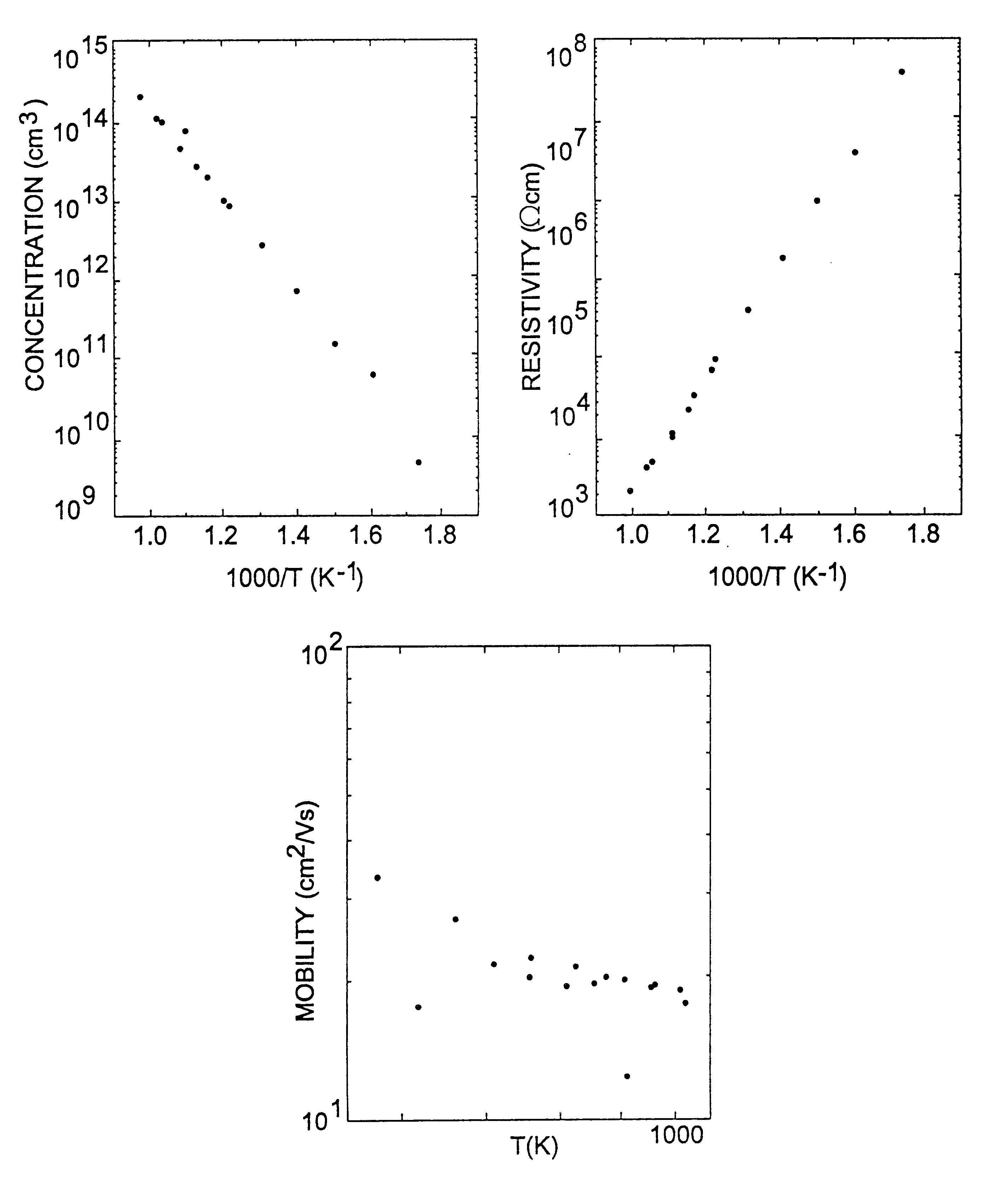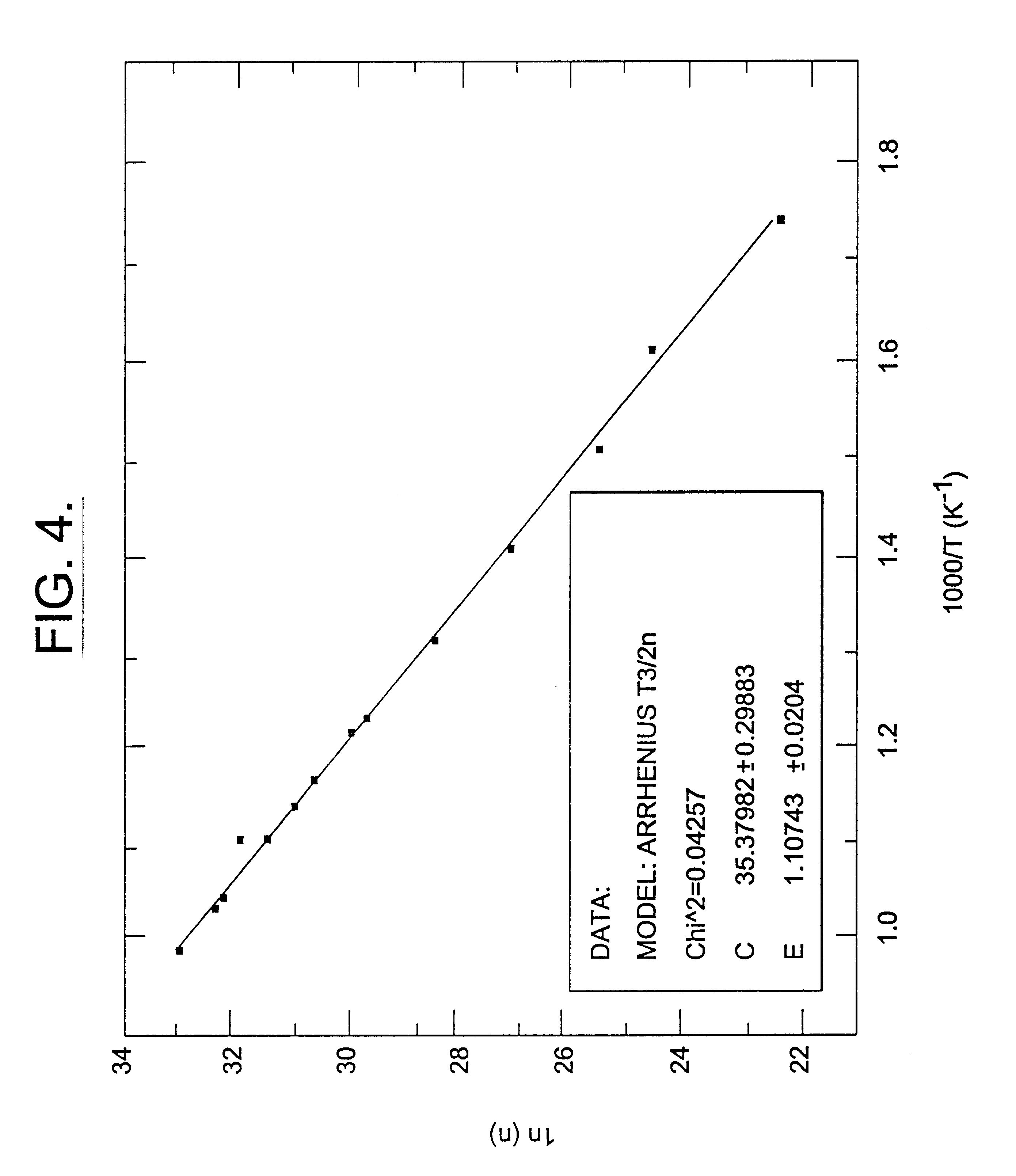Semi-insulating silicon carbide without vanadium domination
a silicon carbide and silicon carbide technology, applied in the direction of polycrystalline material growth, crystal growth process, after-treatment details, etc., can solve the problems of reducing yield, negatively affecting the crystalline quality of the resulting material, and generally too conductive silicon carbide grown by most techniques, etc., to achieve high frequency operation
- Summary
- Abstract
- Description
- Claims
- Application Information
AI Technical Summary
Benefits of technology
Problems solved by technology
Method used
Image
Examples
Embodiment Construction
Two wafers of semi-insulating SiC were examined at the Air Force Research Laboratory at Dayton, Ohio (Wright-Patterson Air Force Base), with high temperature Hall effect and SIMS. No understandable results were available from one of the wafers (possibly because of unsatisfactory ohmic contacts), but two Hall samples from the second wafer both gave the same results, giving a reasonable confidence level in those results.
Both wafers were insulating at room temperature. The measurable wafer was thermally activated at elevated temperatures and the carrier concentration was measurable, which is not always possible in semi-insulating material because of the low mobilities due to the high temperatures involved. The carrier concentration was around 10.sup.15 cm.sup.-3 at 1000K where the resistivity was about 103 .OMEGA.-cm. Such carrier concentration is about one to two orders of magnitude lower than that seen in conventional semi-insulating material or vanadium doped material at the same te...
PUM
| Property | Measurement | Unit |
|---|---|---|
| wavelengths | aaaaa | aaaaa |
| atomic mass | aaaaa | aaaaa |
| carrier concentration | aaaaa | aaaaa |
Abstract
Description
Claims
Application Information
 Login to View More
Login to View More - R&D
- Intellectual Property
- Life Sciences
- Materials
- Tech Scout
- Unparalleled Data Quality
- Higher Quality Content
- 60% Fewer Hallucinations
Browse by: Latest US Patents, China's latest patents, Technical Efficacy Thesaurus, Application Domain, Technology Topic, Popular Technical Reports.
© 2025 PatSnap. All rights reserved.Legal|Privacy policy|Modern Slavery Act Transparency Statement|Sitemap|About US| Contact US: help@patsnap.com



